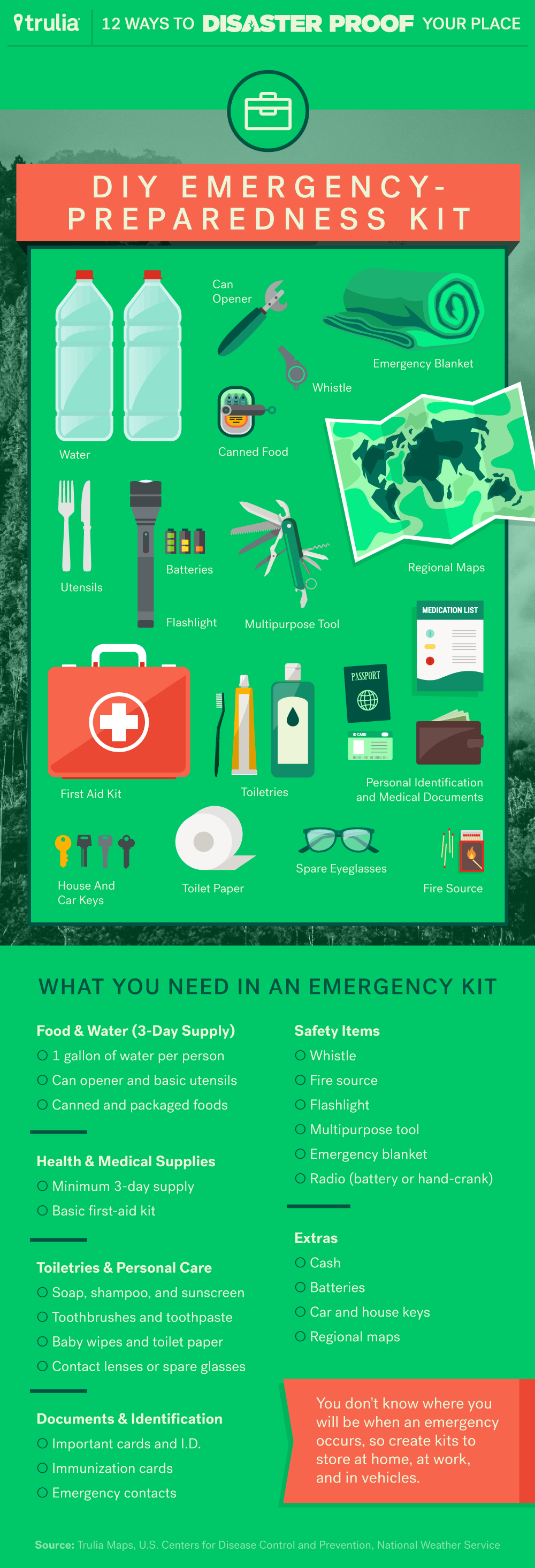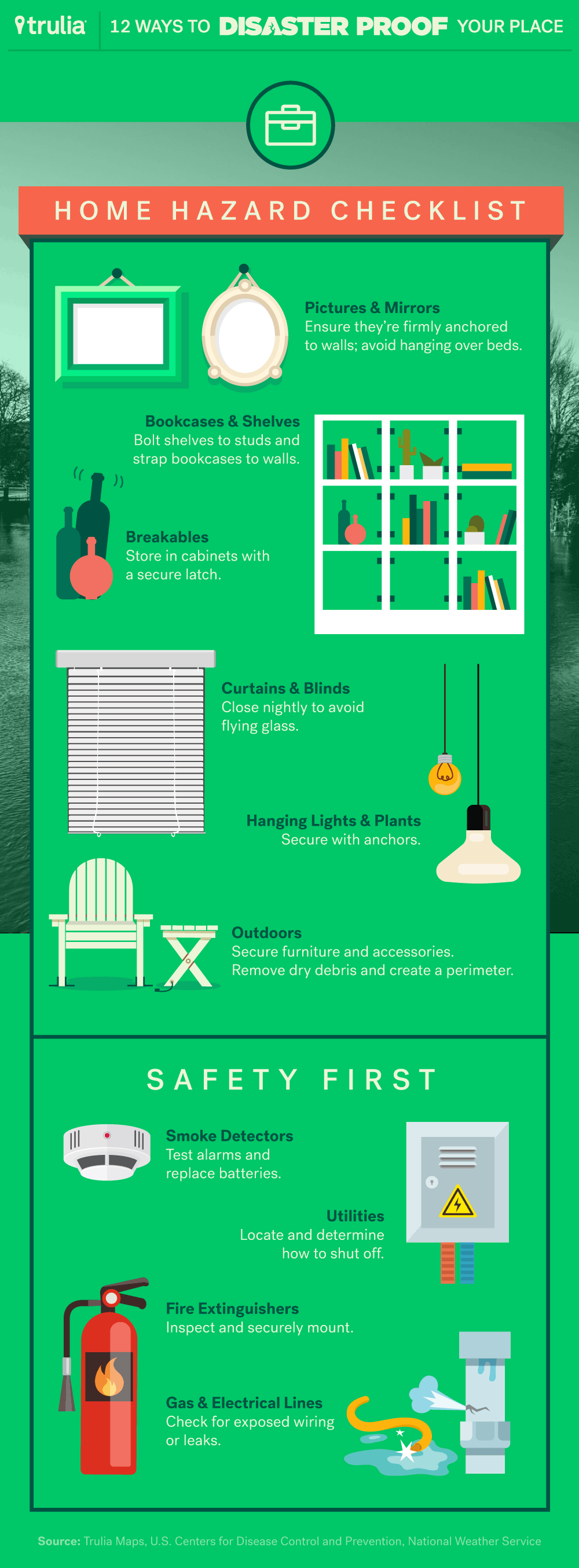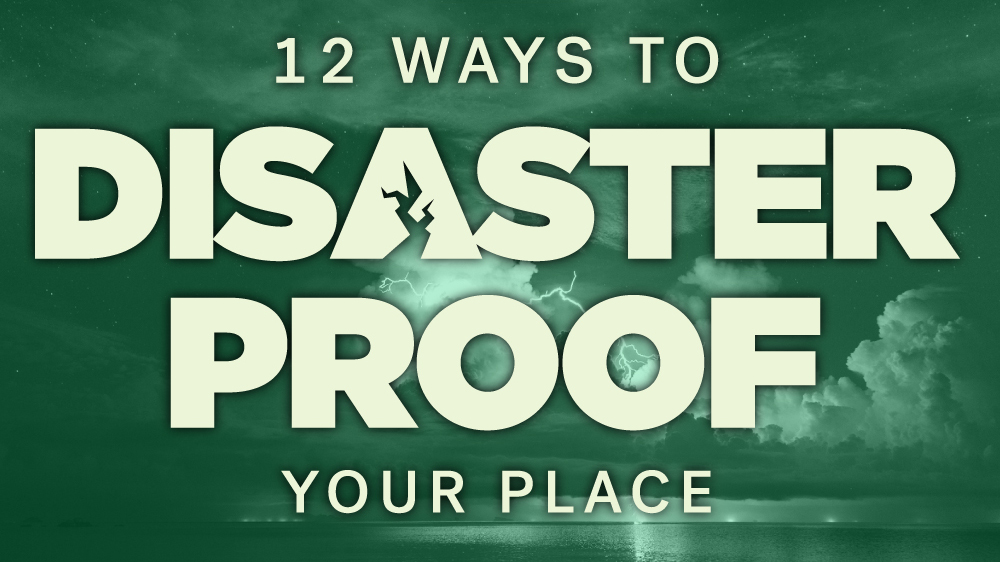On the morning of April 18, a massive earthquake hit San Francisco, CA. The quake itself lasted less than a minute, but the impact? Total disaster. Fires burned for days, 500 city blocks were destroyed, and more than half of the population was left homeless, with hundreds of thousands camping out in tents.
Of course, that was 110 years ago. But natural disasters can hit anywhere, anytime, and often without warning. It doesn’t matter if you live in tornado territory or are still reeling from the last hurricane to hit shore — disaster preparedness is a crucial part of keeping your home base safe. So whether you’re looking for an apartment for rent in Portland, OR (situated along the Cascadia subduction zone — eek!), or pondering the purchase of your first home, it’s important to consider the powerful effects of Mother Nature.
We gathered 12 tips to help with disaster preparedness. Read on to find out how to prepare your home for a natural disaster in just three steps.
Create an emergency-preparedness kit
Did you know that only 20% of all earthquakes are actually felt by humans? Or that flooding causes more damage than any other type of natural disaster? (According to the National Weather Service, a scant 6 inches of fast-moving water can knock down an adult.)
Whether you live in a high-risk tornado region like Oklahoma or simply want to be ready for anything, the easiest way to prep your place for disaster is to create an emergency-preparedness kit. (Bonus points for checking Trulia’s local hazards maps to pinpoint your region’s risk for earthquake, tornadoes, flooding, and wildfires.)

What should you put in an emergency kit?
A disaster-supplies kit contains items you may need in the event of an emergency, from food to clothing to medicine. The list below is a good place to start. Be sure to rotate through your kit every few months to swap out expired items or to include new medications or necessary supplies. Since you never know when or where an emergency will occur, create three kits and keep one at work, at home, and in your car.
At least a three-day supply of food and water
- 1 gallon of water per person
- Can opener and basic utensils
- Canned and packaged foods
Health and medical supplies
- Minimum three-day supply
- Basic first-aid kit
Toiletries and personal care
- Soap, shampoo, and sunscreen
- Toothbrushes and toothpaste
- Baby wipes, toilet paper, and paper towels
- Contact lenses or spare eyeglasses
Safety items
- Whistle
- Flashlight
- Multipurpose tool (a Swiss Army knife)
- Emergency blanket
- Radio (battery, solar, or hand-crank)
Documents and identification
- Insurance cards, Social Security cards, etc.
- Medical records and immunization cards
- Family and emergency contact information
Extras
- Cash
- Batteries
- Car and house keys
- Regional maps
Complete a home hazard checklist
The perfectly tacky thrift-store painting hanging over your bed that’s been a mainstay since college? It might bring back good memories, but it won’t feel so good when it crashes down on you in the middle of the night. One of the quickest (and cheapest) ways to prepare your home for a natural disaster is to breeze through this hazard checklist.
Spend a few minutes reviewing each item on the list, then follow up with any repairs or updates needed to improve your place. If renters turn up serious safety concerns and your landlord won’t make repairs, it might be worth looking into local tenant rights laws to see if you can lobby to have updates made. Homeowners might want to check with community emergency-response teams to see if there are local programs to help fund safety-related upgrades.

Home hazard checklist
- Pictures and mirrors: Ensure they’re firmly anchored to walls; avoid hanging over beds
- Bookcases and shelves: Bolt shelves to studs and strap bookcases to walls
- Breakables: Store in cabinets that latch
- Curtains and blinds: Close nightly to avoid flying glass
- Hanging lights and plants: Secure with anchors
- Appliances: Restrain with straps or hooks
- Outdoors: Secure furniture and accessories
- Landscaping: Remove dry debris and create a perimeter
Know your area’s risk levels for natural disasters
Plenty of clichés ring hollow, but there’s one that (groan-inducing or not) holds true: “An ounce of prevention is worth a pound of cure.” You can’t anticipate every possible outcome for every possible danger, but it can’t hurt to pay attention to the risk levels for specific natural disasters. Check Trulia’s local maps to find out which disasters are most common in your state, then do a little homework to ensure you can tell fact from fiction when it comes to common beliefs about flooding, earthquakes, and hurricanes before buying that home for sale in El Paso, TX.



